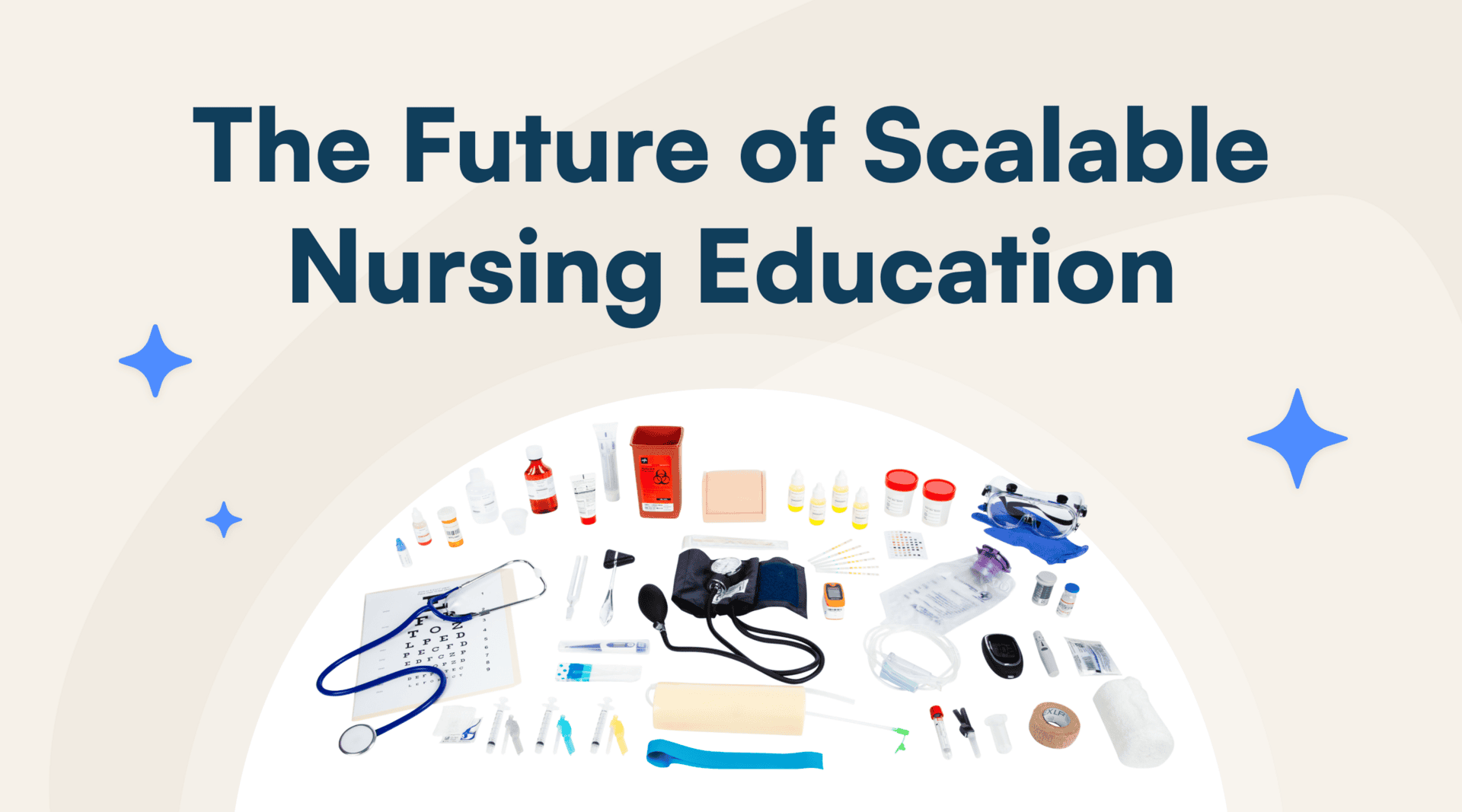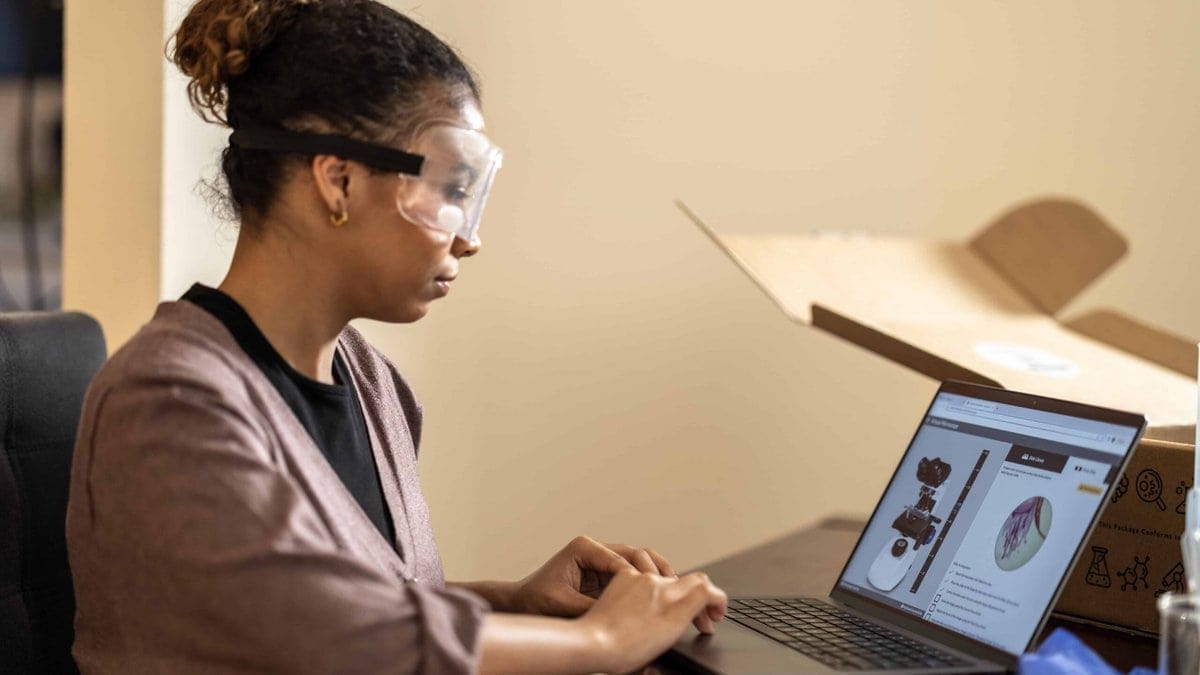Online learning has opened the door to new opportunities, such as finishing bachelor’s degrees, continuing education, and career advancement, for those who otherwise might not have the means or access to enroll in traditional programs. But the opportunity to learn online also comes with some challenges, including limited ways to collaborate and the growing sense of isolation students experience when they don’t have the built-in social interactions of your on-campus labs. In fact, the very idea of science lab partners is a core component of the lab experience, and without it, students miss out on opportunities to learn from one another and build strong class community.
In this article, we’re exploring some research-backed ways you can build community in your online lab course and help your students foster virtual lab partnerships so they feel more connected and engaged—all of which leads to a more meaningful online learning experience.
Why Community & Collaboration in Online Labs are Important
Facilitating student collaboration in online science labs can be a challenging task and one that many instructors might not be prepared for. Virtual team projects and discussions can be particularly challenging, as students grapple with issues related to technology, management, communication, and culture (Flammia et al., 2016). Despite these challenges, collaboration continues to be one of the most effective instructional methods for students. So let’s think about this in the context of lab partners.
Core to the traditional on-campus lab experience, lab partnerships are an opportunity for students to interact, talk about the expectations around an experiment, analyze the results, and work together to come up with some conclusions. Do this on repeat throughout a semester, and you’re going to start fostering better connections between students.
When students feel more connected, they’re more comfortable sharing ideas and perspectives, which fosters a greater sense of course community. In fact, a hefty amount of educational research highlights the benefits of collaborative and communal learning. In one national study of more than 80,000 first-year and senior college students, researchers found that participating in a learning community, where a group of students worked together in multiple classes, was associated with higher levels of engagement, satisfaction, and learning outcomes achievement.
When students feel they belong, they are more likely to be motivated to complete class work, feel safe enough to contribute to discussions, and be open to the kind of feedback that can help them improve. It’s just a bit more challenging to facilitate this kind of partnering, collaborating, and community building online. The following strategies are designed to help you do that—turning passive online learners into active ones who feel connected, engaged, and part of a classroom community online.
How to Create Opportunities for Connection, Collaboration & Lab Partnerships
Like many aspects of teaching, attending to these dimensions in an online science lab takes intentional planning. So now, you’ll have to step into the formal role of community builder so your online students can experience meaningful moments of interaction and collaboration. Here are some ways to do it.
Facilitate Online Lab Partners
Hands-on labs are application-based learning experiences for students, and that kind of learning is best done with members of their own learning community. So one of the most impactful ways to facilitate this is to consider creating online lab partner pairs. To do this, pair up students at the beginning of your course, similar to how you would for your on-campus labs. Encourage students to use course chat and video to discuss both expectations and results of their experiments. Some students might even want to conduct those experiments together via live feeds with one another. In addition to working together through assignments, each student now has built-in peer support and someone they can go to — besides you — to ask questions and share experiences. With each hands-on lab, you have a built-in scenario to create connections among students and build community.
“When I think back to my undergrad days, the first thing that comes to mind are my lab partners. Working together to navigate experiments, course correct problems, hypothesize outcomes, and just having someone to lean on when course material felt exceptionally challenging was so valuable. It’s been so heartening to see the instructors we partner with embrace and replicate this concept in their online lab course.”
Cait Runne-Janczy, PhD
Chief Academic Officer
Science Interactive
In addition, hands-on lab lessons provide an opportunity to layer in scenario-based assignments—or activities where students can apply theoretical knowledge to a situation in order to develop stronger critical thinking skills. Experiments provide the perfect event for this, during which you can pair up students to work together, developing hypotheses and interpretations before an experiment, and compare results post experiment. They can work together to navigate labs, as well as course correct problems. The results: a team effort where students feel more connected and as engaged as they would in an on-campus setting.
Use Course Discussions
Use your LMS to engage students in an online course discussion about a particular lab as part of the class curriculum to help them not only improve their critical thinking skills but also encourage them to engage with others in the class in a meaningful way. Use thoughtful prompts, like discussing expectations vs results of a particular experiment, to establish this conversation as a forum to connect with each without the pressure of a graded assignment. During these online discussions, encourage students to share videos and photos of their experiment setups and their thoughts. When students include media with their discussion, they’re more likely to engage.
You can also create student-led discussions, assigning student leaders for each lab. These students are responsible for facilitating the discussion, which includes asking course participants different questions, opening the group up to different perspectives, and encouraging participants who are making unclear contributions to give examples and factual evidence of their points.
You can also create small-group discussions. Send students off into their own discussion pairs or small-groups to share their lab results for particular experiments on your course discussion boards; assign a discussion leader for each lab and have students compare and contrast results and hypothesize why there might be differences.
Studies show that these kind of online discussions, including student-led ones, enhance community and encourage other students’ participation, while also being beneficial for learning outcomes — generating innovative ideas and providing a risk-free, more relaxed atmosphere for discussion.
Incorporate Students’ Experiences & Expertise
Students come to your course with a wide range of knowledge and experiences, and have insights to share. Invite students, independently or in small groups, to solve organic chemistry problems, for example, in front of their peers (virtually) and explain their solutions. Involving students as teachers heightens interdependence, mutual respect, and engagement—valuable components for building community.
Provide Real-Time OpportunitiesWhile most online courses are meant to provide flexibility for students, many students appreciate opportunities to interact live. You can give them options to connect virtually via group projects and synchronous meetings to keep them engaged. Have them use the chat, discussion, and video tools available in your LMS or elsewhere to connect.
| See it in Action: Case Study Spotlight: BrightPoint Community College At BrightPoint Community College, Professor Tamara Balgojevic has her students perform hands-on chemistry experiments independently, but then sorts her students into smaller groups to work through the lessons together. This enables students to collaborate and learn from one another throughout the course, which Blagojevic says works to better reinforce the lessons and help students more easily apply course concepts to the real world. Class community is stronger, and the discipline feels more relatable and less intimidating for students. |
Building a Thriving Learning Community in your Online Course
In the end, building community is all about student engagement and how motivated your students are to learn. Learning improves when students are inquisitive, interested, or inspired, and learning tends to suffer when students are bored, dispassionate, or disaffected. While online lab partnerships won’t necessarily look the same as lab partners in an on-campus lab, tailoring the concept for your online lab is an opportunity to increase collaboration and get students excited.
All of these strategies are intended to help you to do just that—encourage participation, engage students, and build connections. When you have engaged students, you’ll have students who feel like they belong in your course. With that belonging, a strong sense of community can blossom, and your students will feel seen and connected through an experience that ultimately mirrors the authenticity of a traditional on-campus lab experience.
If you’re looking to create a more engaging, authentic lab experience for your online students, we can help.
Discover more articles

Science Interactive Launches New Nursing Fundamentals

What Clinical-Ready Actually Looks Like (And How to Get There Sooner)


